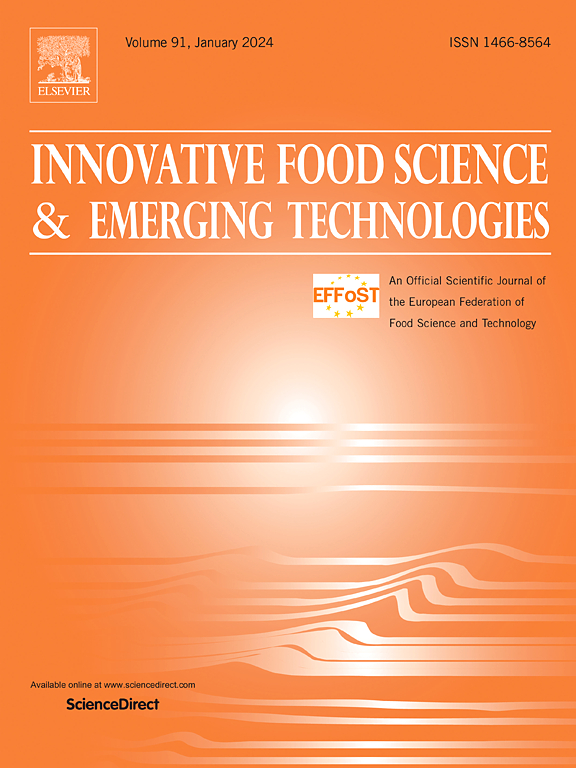发展中国家低成本创新食品干燥机:现状与未来展望
IF 6.3
1区 农林科学
Q1 FOOD SCIENCE & TECHNOLOGY
Innovative Food Science & Emerging Technologies
Pub Date : 2025-07-06
DOI:10.1016/j.ifset.2025.104109
引用次数: 0
摘要
食品干燥是食品工业中能源最密集的过程之一,在全球范围内消耗约95焦耳的能源。此外,使用化石燃料的传统热干燥系统不仅占大量温室气体排放,而且占整个制造过程的15%左右。鉴于对气候变化和资源枯竭的日益关注,提高食品干燥技术的能源效率和促进环境可持续性已成为关键的优先事项。本文综述了目前最具发展前景的低成本食品干燥技术及其局限性和发展前景。本研究还探讨了太阳干燥、太阳能干燥、生物质干燥、可逆空气干燥和热泵干燥等最常见的干燥技术,以及它们的优缺点。虽然晒干是最便宜的方法,但糟糕的食品质量阻碍了这一过程的商业化实施。在不同的低成本创新干燥技术中,改进的太阳能干燥、地热干燥、改进的生物质干燥、热泵干燥、基于废热的对流干燥(WHCD)和不同的混合干燥,由于它们具有巨大的替代传统方法的潜力,因此进行了比较。本研究表明,虽然改进的太阳能干燥和WHCD存在一定的局限性,但它们具有环境影响小、效率提高的特点,性能相对较好。然而,研究结果强调需要进行全面的可行性研究,以使这些技术从研究过渡到工业规模的实施,最终推进可持续和能源弹性粮食系统的目标。本文章由计算机程序翻译,如有差异,请以英文原文为准。
Low-cost innovative food dryers for developing countries: current status and future prospect
Food drying is one of the most energy intensive processes in the food industry that consumes approximately 95 exajoule of energy globally. Moreover, the conventional thermal drying system using fossil fuels not only accounts for high amount of greenhouse gas emissions but also accounts for 15 % of the overall manufacturing process, approximately. In light of growing concerns over climate change and resource depletion, enhancing energy efficiency and promoting environmental sustainability in food drying technologies have become critical priorities. This study reviews the most promising low-cost innovative food drying techniques along with their limitations and future prospects. This study also explores the most common drying techniques such as, sun drying, solar drying, biomass drying, reversible air drying and heat pump drying, along with their shortcomings and advantages. Although sun drying is the cheapest method, poor food quality keeps the process from being implemented commercially. Among different low-cost innovative drying techniques, improved solar drying, geothermal drying, improved biomass drying, heat pump drying, waste heat-based convective drying (WHCD) and different hybrid drying, are compared due to their huge potentials to replace the conventional methods. This study reveals that although having some limitations involving improved solar drying and WHCD, they perform comparatively better having low environmental impact and improved efficiency. However, The findings underscore the need for comprehensive feasibility studies to enable the transition of these technologies from research to industrial-scale implementation, ultimately advancing the goal of sustainable and energy-resilient food systems.
求助全文
通过发布文献求助,成功后即可免费获取论文全文。
去求助
来源期刊
CiteScore
12.00
自引率
6.10%
发文量
259
审稿时长
25 days
期刊介绍:
Innovative Food Science and Emerging Technologies (IFSET) aims to provide the highest quality original contributions and few, mainly upon invitation, reviews on and highly innovative developments in food science and emerging food process technologies. The significance of the results either for the science community or for industrial R&D groups must be specified. Papers submitted must be of highest scientific quality and only those advancing current scientific knowledge and understanding or with technical relevance will be considered.

 求助内容:
求助内容: 应助结果提醒方式:
应助结果提醒方式:


